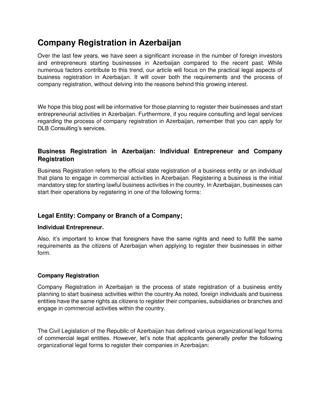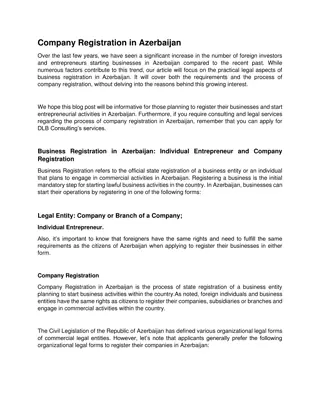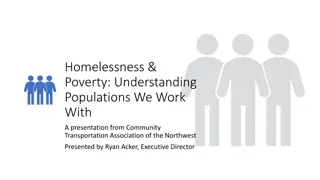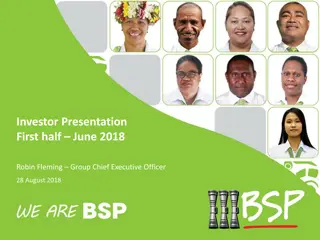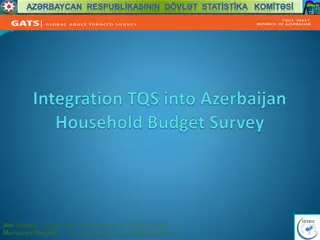Poverty Measurement and Methodology in Azerbaijan
Demographical overview of Azerbaijan including population statistics, birth and death rates, literacy rate, and definitions of poverty. The data reflects the social and economic situation in Azerbaijan, focusing on factors such as household size, population density, and life expectancy. Various approaches to defining poverty criteria are discussed, emphasizing the importance of using multiple methods to effectively measure poverty.
Download Presentation

Please find below an Image/Link to download the presentation.
The content on the website is provided AS IS for your information and personal use only. It may not be sold, licensed, or shared on other websites without obtaining consent from the author.If you encounter any issues during the download, it is possible that the publisher has removed the file from their server.
You are allowed to download the files provided on this website for personal or commercial use, subject to the condition that they are used lawfully. All files are the property of their respective owners.
The content on the website is provided AS IS for your information and personal use only. It may not be sold, licensed, or shared on other websites without obtaining consent from the author.
E N D
Presentation Transcript
POVERTY MEASUREMENT AND METODOLOGY OF HOUSEHOLD BUDGET SURVEY IN AZERBAIJAN Yashar PASHA
Demographical situation Territory 86,6 square km; Number of population 9356500; Number of households 1895941 Average size of households 4,7 Population density 96; (per 1 km2) urban population 54 per cent; rural population 46 per cent; men 49 per cent; women 51 per cent; Population by age group: 0-14 years 26 per cent; 15-64 years 67 per cent; 65 years and older 7 per cent; 2
Demographical situation Per 1000 person of population: births rate 16; deaths rate 6; natural increase 10; marriages 8; divorces 1; Per 1000 of born: infant mortality children up to 12 months 10 children up to 5 years 15; maternal mortality 26 (for 10000 of born) 3
Demographical situation Literacy 98.8%; men 99.5%; women 98.2% Life expectancy 72.4 years for men 69.6 years for women 75.2 years Number of refugees&IDPs 1 million persons; Capital Baku city number of resident population 1 million 855 thousands persons 4
Definition of poverty and social exclusions adopted by the Council of Europe in 1984: poor are those persons, families and groups of persons whose resources (material, cultural and social) are so limited as to exclude them from the minimum acceptable way of life in the state to which they belong Definition of poverty adopted in Azerbaijan in 2001: Poverty is an impossibility due to a lack of funds to keep up to the living style inherent in a specific society in a specific period of time
Approaches to defining poverty criteria Monetary Non-monetary Relative Absolute Income-based Consumption-based Objective Subjective Most researchers recognize that a combined use of several different approaches is the most effective way to measure such a complex and multifaceted phenomenon as poverty.
Approaches to defining a poverty line for international comparisons monetary minimum funds required for survival, per day consumption-based minimum dietary energy intake or quantity of microelements in daily food consumption structural maximum percentage of household expenditures for food in the total household expenditures relative criteria deprivations
Sampling Procedure for HBS Used territorially-random sampling For sample uses three-stage probability sampling with preliminary stratification. The population census data were gathered using the following administrative units: the population census districts, supervisor site and enumerator unit. The census districts are used as the primary sampling units (PSUs), with the population census supervisor areas as the secondary sampling units (SSUs), and with households as the ultimate sampling units 8
Sampling Procedure for HBS Data from the 2009 population census had been entered and stored by following structure: code of districts and census district, supervisor site, enumerator unit, surname, name head of households, number of person, full address and mail index 9
Sampling Procedure for HBS The secondary sampling units were formed using maps of the population census territories, the population census data on number of households living within each of these territories. Within each primary sampling unit in rural areas selected at the first stage, one secondary sampling unit per interviewer was selected, using systematic probability proportional to size sampling. In order to spread out to a greater extent the sample within each primary sampling unit of urban areas, two secondary sampling units per interviewer were selected using systematic probability proportional to size sampling. 10
Second stage sampling As a rule the population census supervisors areas were used as the secondary sampling units. Nevertheless some of population census supervisors areas were too spread out. For such territories each secondary sampling unit was formed using the population census maps as a amalgamation of some of population census enumerator areas. Thus more compact secondary sampling territories were created. The total number of secondary sampling units formed within 125 selected primary sampling units was equal to 493 11
Sampling of households Selection of households for each interviewer is carried out within sampled secondary units using simple random sampling. Each interviewer every week approaches 2 households for the 2 weeks diary period. Thus the number of sampled households for each interviewer within one quarter is equal to 26. 13 different weeks. Since every household participates in the survey only during a one-quarter period the annual sample size for each interviewer is equal to 104 households. 12
Starting from January of 2008 quarterly panel survey I quarter 4250 households II quarter 4250 households III quarter 4250 households IV quarter 4250 households In annual data base 4250 households and 18000 individuals 13
Survey Questionnaires: Questionnaire for main interview. (is filled in the beginning of survey for every household); Expenses journal. (is filled by every household during 2 weeks of a quarter); Quarter questionnaire of incomes and expenses. (is filled at the end of survey for every household by all persons involved). Instruction for a quarter questionnaire. (utilized while a quarter questionnaire of incomes and expenses is being filled); 14
Received Results are Grouped: By types of households By education, sex, age, employment, social status of a household.s head By decile and quintil groups of population By level of income and expenses of families with/without children 15
Structure of average per capita incomes 100 31.2 22.6 Total income Employment incomes Self-employment incomes 15.7 Agricultural incomes 1.5 Rent incomes 0.4 10.1 Natural social transfers Hardship allowances 1.1 1.1 Pensions Property incomes 16.3 Other types of incomes 16
Assessment of the total of monetary incomes by quintil groups of population I quintil 12.4 % II quintil 16.0 % III quintil 18.6 % IV quintil 21.6 % V quintil 31.4 % The disparity between 10% of the most and the least wealthy groups of population is 3.3 times 17
Ration of Refugee and IDP childrens 8.3 % of refugees. children aged between 12 months and 6 years are considered as underfed. In this category children of 5 years have the highest percentage of children with insufficient weight, boys . 10.7 %, girls . 7.5 % 18
Energy of Foodstuff Total Men Women Energy, kcal 2393 2378 2399 Including animal-origin 441 438 453 Proteins, grams 74 73 75 Including animal-origin 26 26 26 Fat, grams 64 63 67 Including animal-origin 35 34 35 19
Poverty Level, 2012 Absolute poverty 137 $ (consumers expenditure median) is based in the size of a minimum consumption basket that includes 2400 kcal per day specific gravity of foodstuff in a minimum consumption basket is equal to 59 % Relative poverty 78 $ (60 % of consumers expenditure median per capita) defines poverty level in the poorest groups of population 20
Poverty line The Law on living wage (minimum consumption budget) was adopted by Cabinet of the Ministers in 2005 according to which per capita basket of goods per year is calculated by normative-statistical method as well as by able-bodied population, pensioners, and children under 15 years old. 21
Poverty line and poverty level in 2001-2012 year 140 120 100 80 60 40 20 0 200120022003200420052006200720082009201020112012 Poverty line, AZN Poverty level, in per cent 22
Consumption Expenditure Structure Total Foodstuff Alcohol and tobacco Clothing and footwear Rent, domestic gas, electric power, etc. Furniture, current repairs, etc. Healthcare Transport Communications Recreation and culture Education Restaurants, caf , etc. Other goods and services 100 43,2 0,5 1,0 6,8 7,4 8,4 4,6 6,1 3,0 4,1 1,9 8,5 23
Consumption of food products by main products groups, annual, kg. Bread and bakery products 144,3 63,1 Potatoes Vegetables & market gardens 98,5 33,5 7,1 294,4 155,0 74,8 31,7 9,9 Meat and meat products Fish and fishery Milk and dairy products Eggs, piece Fruit and berries Sugar and confectionery Vegetable oil and margarine 24
Chemical structure, calories of consumed foods, per capita, per day. Total 75,0 25,8 66,5 37,3 460,2 Urban 71,9 24,5 66,1 36,8 428,2 Rural 78,4 27,2 67,0 37,9 496,5 Protein, gram Animal protein, gram Fat, gram Animal fat, gram Carbohydrate, gram Animal carbohydrate, gram 5,4 4,1 6,9 Kilocalories, kcal 2424,6 2399,7 2488,6 Animal kilocalories, kcal 463,7 448,8 480,6 25
Thanks! www.stat.gov.az yashar@azstat.org 26





